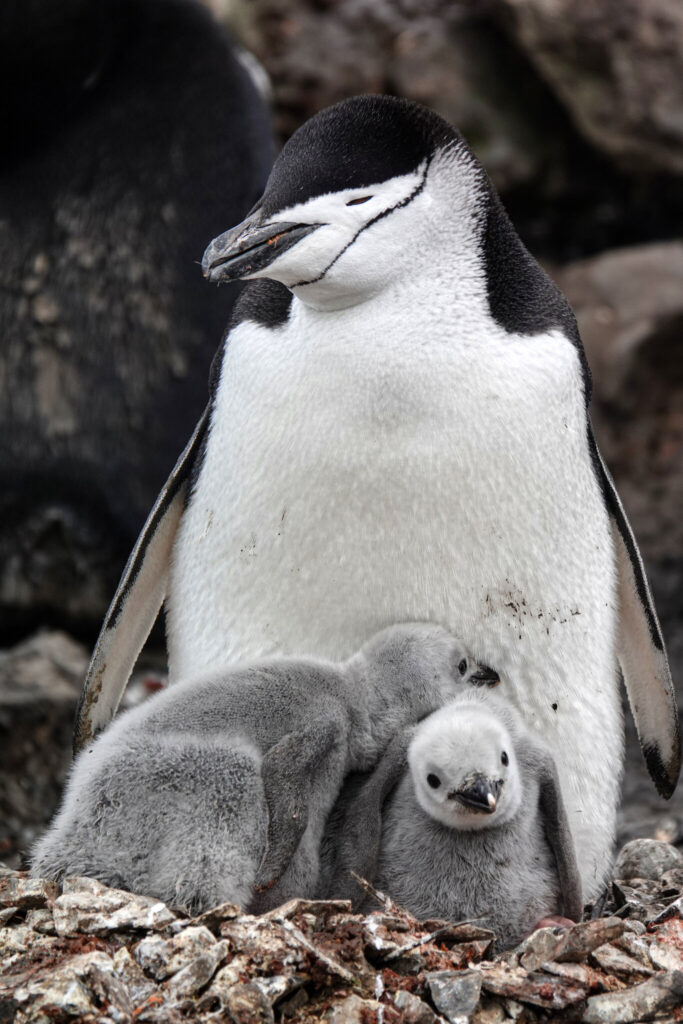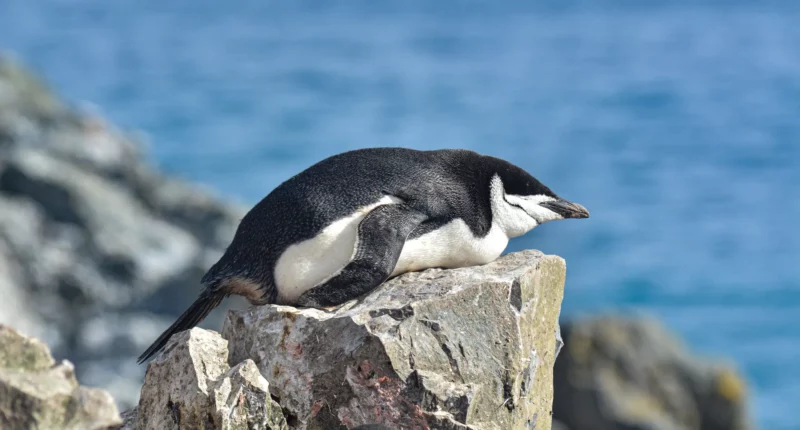Penguins have clinched the title of power napping champions. A recent study has unveiled their incredible ability to doze off numerous times throughout the day, each slumber lasting just a few seconds. This exceptional sleep pattern in penguins highlights the gaps in our understanding of sleep across various animal species.
“This is quite unusual,” mentioned Paul-Antoine Libourel, a neuroscientist from Lyon’s Neuroscience Research Center, reflecting on the discovery. “It emphasizes how limited our knowledge about sleep truly is, showing that animals don’t conform to the standard textbook descriptions.”
Published in the journal Science, the study traces the history of sleep research, starting from the discovery of slow brain waves in people during sleep in the early 1900s. Scientists detected similar patterns in captive animals like mice and pigeons, revealing that nearly all studied animals exhibit phases of unresponsiveness to their surroundings.
However, the manner in which animals sleep varies significantly. From brown bats dozing for 20 hours a day to giraffes surviving on less than two hours of sleep, the sleeping habits across species vary extensively. The shutdown during sleep also differs; while human brains switch off completely, seals can deactivate one side while keeping the other awake, enabling them to continue swimming while resting.
Advancements in technology have shed light on the contrasting sleep patterns between animals in captivity and those in their natural habitats. For instance, sloths in zoos sleep for around 16 hours, but observed in Panamanian rainforests, their sleep time is less than 10 hours.
The research delved into the sleep patterns of nesting penguins, tracking their fragmented sleep and correlating eye state with brain activity. In a remote environment on King George Island near Antarctica, researchers, accompanied by Won Young Lee from the Korea Polar Research Institute, monitored chinstrap penguins in their breeding colonies. Equipped with electrodes and sensors, the penguins’ activity was recorded for up to 11 days in December 2019.

The penguins, balancing their time between ocean swims and nurturing their young, spent just three percent of their time resting while at sea. Returning to their nests, their brain waves slowed into a typical bird sleep pattern but lasted only a few seconds before waking up again. Astonishingly, they cycled through this pattern 600 times an hour.
Dr. Libourel linked these sleep patterns to the extreme conditions in which penguins rest. Their colonies are bustling and noisy, constantly under threat from predators like brown skuas that raid nests for eggs or chicks. Despite such disruptions, the penguins manage to get substantial sleep, hinting at potential benefits from their microsleep.
However, some experts, like Vladyslav Vyazovskiy from the University of Oxford, question the advantages of these fleeting sleep episodes in penguins. He challenges the traditional perspective on sleep, suggesting it might be the default state for animal brains, urging scientists to explore why animals wake up when they do.
While penguins display remarkable fragmented sleep patterns, scientists continue to unravel the complexities of sleep across diverse species, challenging conventional understandings of its purpose and benefits.






